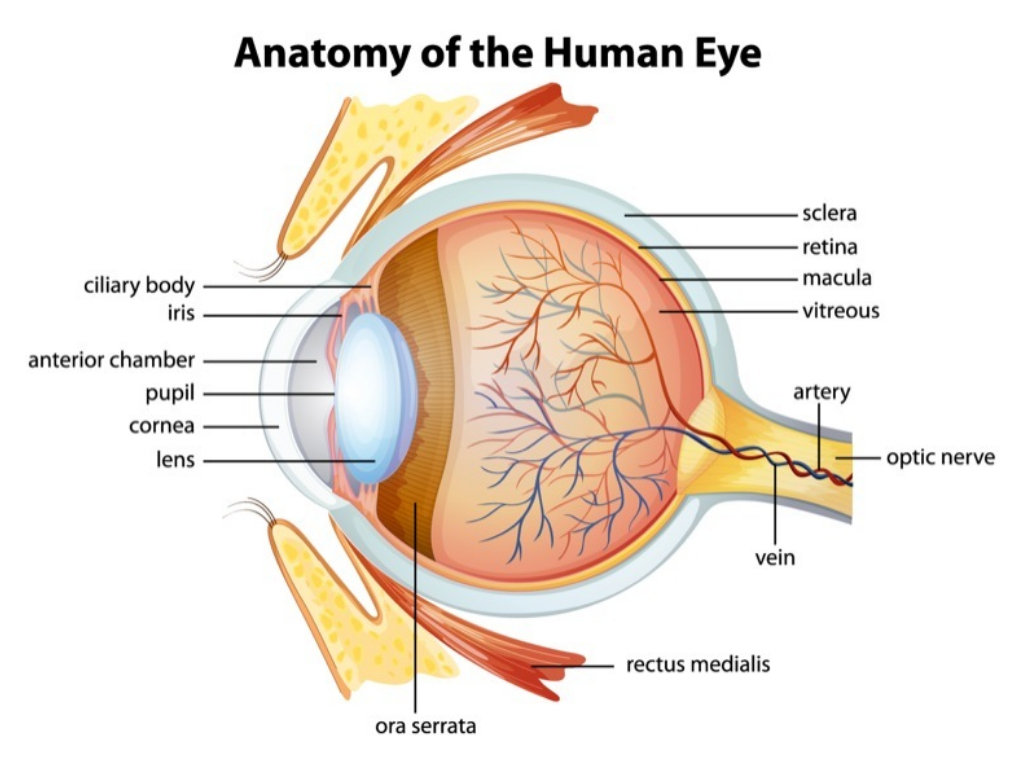The eye is the organ responsible for sight. Eyes detect light and convert it into electro-chemical impulses in neurons. In humans, this takes place on the retina, and the electrical signals are sent to the brain via the optic nerve.
How Your Eye Works
Vision occurs when light enters the eye through the pupil. With help from other important structures in the eye, like the iris and cornea, the appropriate amount of light is directed towards the lens. Just like a lens in a camera, the lens in the eye ‘refracts’ (bends) incoming light onto the back of the eye (retina). The retina is like the film part of a camera. The retina is made up by millions of specialised cells known as rods and cones, which work together to transform the image into electrical energy. This electrical signal is sent via the optic nerve in the retina to be processed by the brain.

Parts of the Eye Explained
Lens
The lens is a transparent body behind the iris. The lens bends light rays so that they form a clear image on the retina. The lens is elastic and can change shape. It gets fat to focus close objects and thin for distant objects.
Cornea
The cornea is the transparent membrane which forms the outer coating at the front of the eyeball and covers the iris and pupil. It also focuses light on the retina.
Pupil
The pupil is the dark circular hole in the centre of the iris. It allows light to pass through and is made larger or smaller by the iris.
Iris
The iris is the coloured circle surrounding the pupil and controls its size. The colour is determined by the amount of melanin pigment in your eyes and the nature of your genes.
Retina
The retina is the light-sensitive inner lining of the back of the eye. Rays of light enter the eye and are focused on the retina by the cornea and lens. The retina produces an image which is sent along the optic nerve for the brain to interpret.
Macula
The macula is the small area at the centre of the retina responsible for what we see straight in front of us, at the centre of our field of vision.
Sclera
The sclera is the white of the eye and forms the outer coating of the eyeball.
Conjunctiva
The conjunctiva is a mucous membrane that covers the exposed front portion of the sclera and lines the inside of the eyelids.
Tear film
The tear film is the moist layer that covers and protects the outer surfaces at the front of the eye.
Vitreous
The vitreous is the clear, jelly-like substance that fills the inside of the eye from the lens to the retina.
